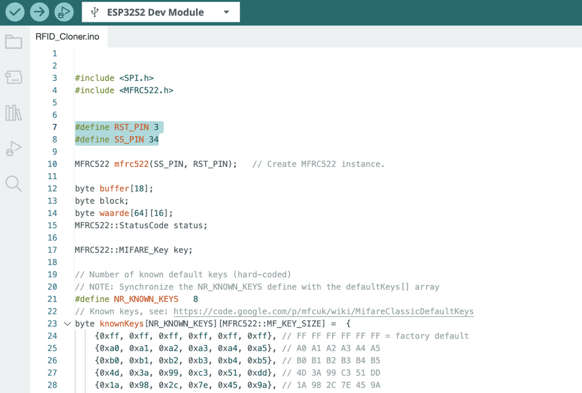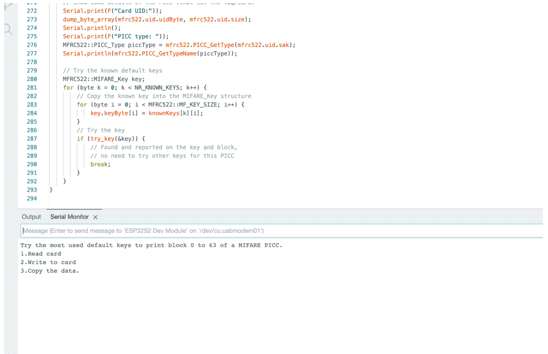
RFID and NFC tags are now used almost everywhere, from metro cards to bus cards, parking lots, office attendance systems, entry gates, hotel rooms, and many more places. However, sometimes we may lose our cards, causing inconvenience. In such situations, having a cloned card can serve as a backup. There are also various security risks associated with NFC and RFID cards, and one popular method of exploitation is skimming and cloning. In this project, we will explore how to clone an RFID card and make an exact copy.
Note: This project is solely for educational purposes, aiming to provide an understanding of the processes involved and highlight technological security risks. It cannot be used for encrypted cards, and we strongly recommend not engaging in hacking activities. Please use this project for educational purposes only.

Bill Of Materials
The components needed in projet is listed below:-
| Components | Description | Quantity | Price |
| IndusBaord | Dev Boord | 1 | 1400 |
| USB Type C | Adapter | 1 | 100 |
| RFID Reader/Writer | MFRC RFID Reader/Writer | 1 | 150 |
| RFID Cards | RFID Cards to Clone | 2 | 10 |
Coding
For coding, we need the MFRC522 library to interface with the RFID reader-writer module. Install the library and define the reset and SS pin codes for connection. The RFID operates on SPI, and the library by default uses the hardware SPI pins of the IndusBoard. However, we need to specify the RST and SS pins. In the code, we provide three options: reading a card, copying the read data, and writing the copied data to the card for cloning. We set up these functions in the code. You can download the complete code from the bottom of the article and upload it to the board.


Connection
As discussed earlier, the RFID reader-writer module is SPI-based, and our code defaults to using the hardware SPI pins on the board. Connect the SPI pins of the module to the SPI pins of the IndusBoard. The pinouts below the RFID module (GPIO 35, 36, 37, 38) are the SPI pins, so connect MISO, SCK, MOSI, SDA, CS pins to those GPIOs. Then, connect the RFID module to a 3V power supply and ground it using the RFID GND pins as common.


Testing
Plug in the device and open the serial monitor in Arduino. It will display three options: Read card, Write the card, and Copy the data. Select option 1 by sending ‘1’ and place the card on the RFID module that you want to clone. Next, put the blank RFID card onto which you want to make a clone. Send ‘2’ to write the data to that card and create a clone. Once done, you have successfully written the data and cloned the card using option 3. You can also copy the data inside the RFID card for hacking purposes.











